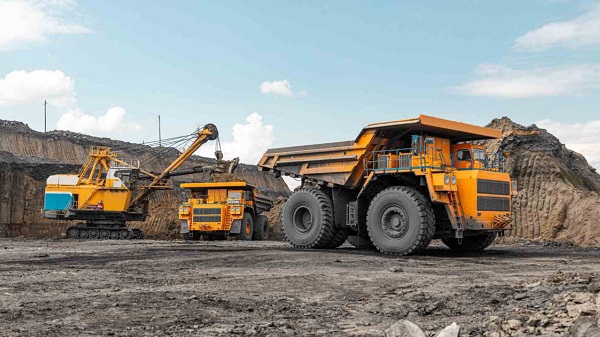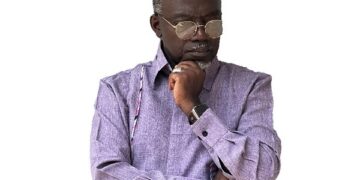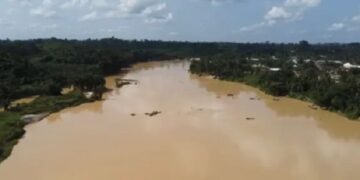LAUNADA, Sept 26 (The African Portal) – Angola’s mining industry is shifting its historic focus on oil and diamonds towards a broader range of minerals.
Kate Steyn, associate partner and principal environmental consultant at SRK, says: “The past few years have seen a diversification away from that heavy reliance on diamonds and oil, towards a broader range of minerals and it is quite exciting to see this unfolding.
“Angola is a mineral-rich country, but until recently, it has been very focused only on those two commodities.”
Ismail Mahomed, partner and principal hydrogeologist at SRK agrees, saying that: “Over the years, we have worked in the diamond industry and, more recently, in copper.
“There has definitely been more activity in the last few years, as the political landscape has shifted.”
In this interview, Senior Executive Vice President, Afreximbank Group, Denys Denya, speaks about the critical need to prioritise the interests and well-being of local mining communities in the extraction and processing of Africa’s mineral resources
Key mineral resources and untapped potential in Angola
Steyn explains that beyond oil and diamonds, Angola also has significant copper deposits, forming part of the same belt that runs through Zambia and the Democratic Republic of the Congo (DRC).
“Northern Angola connects to the Central African Copperbelt running through Zambia and the DRC – essentially an extension of that system,” she says. “Historically, copper has been exploited in northern Angola since the 1930s.
“Operations continued up until the 1970s, when they were disrupted by political unrest during Angola’s war of liberation. Following withdrawal of the colonial authorities, the copper industry came to a standstill for quite some time, but that is now being revived.”
Steyn says Angola also holds several significant iron ore deposits, as well as gold and, particularly salient at the current moment, rare earths, which are now the focus of detailed investigations.
Steyn adds that the country also has granite and stone, as well as significant but unquantified phosphate deposits.
Investment appeal and limitations
“On paper, Angola has huge potential, absolutely,” says Steyn. “There have been real barriers to investment there for a long time and there continue to be challenges to operating in Angola.
“From an Environmental, Social, and Governance (ESG) perspective, we are exposed to ongoing impediments in terms of efficiency, bureaucracy and transparency. On a practical level, major infrastructure challenges persist: access is difficult, road and transport infrastructure are exceedingly limited, and in some areas, landmines still represent a significant hazard.
“Even for exploration, these present significant challenges.” She points to the lack of detailed baseline information, including geological data, as another hurdle: “An initiative called PLANAGEO aims to produce a proper geological map of Angola. It is a critical step for exploration, but the pace has been slow.”
A complex licensing process for mining in Angola
Angola’s Mining Code has evolved, and the establishment of the National Agency for Mineral Resources (ANRM) has consolidated oversight across previously fragmented regulatory bodies, which is intended to streamline processes in terms of approvals and licensing as well as improve transparency and investor confidence.
“There has been regulatory reform, which is encouraging. ANRM’s mandate is to oversee implementation and compliance across exploration and mining concessions. Having a consolidated regulatory body is helpful,” Steyn explains.
While there is some progress in Angola’s mining administration, Steyn explains that in terms of actual licensing, it remains quite complex.
“Specific licenses and rights are required at each stage of the mining feasibility study, from reconnaissance to operations [and ultimately closure], requiring applicants to demonstrate the technical and financial maturity of a project at each stage.
Parallel to the Mining Code licensing requirements, environmental regulations require staged studies of appropriate detail that inform the mining licensing process.
“So, the process is in theory more streamlined and transparent than it was previously, but it remains a challenge to navigate,” says Steyn.
ESG standards and infrastructure bottlenecks and opportunities
Steyn notes that Angola’s environmental laws and regulations, for the most part, align with global ESG standards and best practice.
However, she notes that environmental best practice is often dependent on third parties: “In reality, enforcement can be inconsistent.
Often, it is investors or the companies themselves who insist on applying international best practice, rather than relying on local requirements.”
Infrastructure remains a limiting factor for Angola’s mining industry, but significant developments are underway. The Lobito Rail Corridor Project, a transformative infrastructure project aimed at regional integration linking Zambia and the DRC’s Copperbelt to the Port of Lobito, is a key strategic development.
“It could position Angola as a core transport hub from Central Africa,” says Steyn. “Rail development, road upgrades, communications and port expansion are planned.” Upgrades to Lobito Port will enable handling of bulk exports and position the port as a core transport hub from Central Africa.
Steyn says: “This is an exciting initiative and an enormous amount of work being done. If it is successful, it will be a game changer for Angola.”
Limited local beneficiation when it comes to mining in Angola
In terms of power, she notes: “Angola actually produces (or has capacity to produce) more electricity than it currently consumes. The real challenge is getting that power to where it is needed.”
SRK regularly undertakes Environmental and Social Due Diligence (ESDD) of hydropower projects on the Kwanza River that are at various stages of development and are also managing Environmental and Social Impact Assessments (ESIAs) of several transmission line projects, one of which is a regional partnership with Namibia.
Steyn points out that most minerals are exported from Angola in raw form: “One of the big gaps is in-country processing. Angola currently misses out on much of the downstream economic benefits of beneficiation and processing.”
SRK is providing key geotechnical and engineering input into the advancement of the Kassinga Iron Ore Project: a new steel plant, which is planned to be completed in 2027, will realise a fully integrated industrial complex from mine to plant.
This project paves the way for Angola’s industrial investments in diversified sectors outside of oil.
Water and community impact
Mahomed points out that not all of Angola is water rich and highlights water use as an area that needs attention: “A lot of the mining operations I have worked on are in reasonably remote areas, communities are often small, and companies can sometimes supply water as part of their commitments.
But as mining grows, competition for water could Steyn adds that there is a lot of potential for development in these remote areas to benefit communities. “In some parts of Angola, rural communities rely directly on water resources in the absence of formal infrastructure.
So, where mines do impact on those natural resources, that has a direct impact on communities. Water stewardship becomes a critical consideration.”
Signs of growing investor confidence
In July 2025, De Beers Group, in partnership with Angola’s national diamond company, Endiama, announced a significant step forward in their joint exploration efforts.
The De Beers-Endiama joint venture successfully intersected kimberlite in a high-priority cluster of targets identified from airborne surveys.
The site is now undergoing further drilling, geophysical surveys, and lab analysis to determine the type of kimberlite and its diamond potential.
Mahomed believes that renewed interest from major companies is a positive indicator: “Companies like De Beers announcing that they are taking their exploration in Angola further is a strong sign of interest in Angola.
“There is a lot of potential, but it will take some work to realise the full potential of the country.”
The road ahead
For Steyn, the next few years are pivotal: “The country as a whole is an exciting place to be at the moment. Angola feels poised for take-off after years of stagnation and political uncertainty.
“There is plenty of exploration being done, but this is hampered by infrastructure challenges and a lack of baseline information. Angola needs to continue to develop its own expertise – geologists, scientists and engineers – a key factor in unlocking its potential.
“The diversification into different minerals, coupled with infrastructure upgrades like the Lobito Corridor, could transform the sector.” Mahomed agrees, saying that Angola has immense potential, but it will take some work to realise.
Credit: ESI Africa






